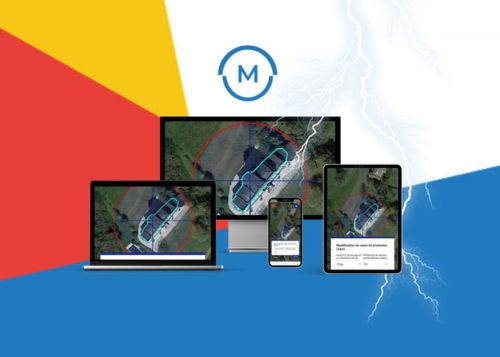Assessing lightning risks is crucial to guaranteeing the safety of sites and infrastructure. Lightning can cause significant damage, fires and even endanger people's lives. However, with the right tools and protocols in place, it is possible to effectively reduce these risks. In this article, we will explore how to assess lightning risks for a site or infrastructure.
Understanding Lightning Risks
Before approaching risk assessment, it is essential to understand the potential dangers associated with lightning. Lightning can cause direct damage, such as fires, explosions or structural damage, as well as indirect damage resulting from electrical surges or electromagnetic interference. It can also present risks to the safety of people working on the site.
Risk Assessment Process
Risk Identification : The first step is to identify vulnerable areas and sensitive equipment on the site. This may include buildings, electrical infrastructure, communications systems, IT equipment, etc.
Probability Assessment : It is important to assess the frequency of electrical storms in the region and the likelihood of them affecting the site in question. Local weather data can be useful for this purpose.
Impact Assessment : Determine the potential consequences of a lightning strike on site equipment and operations. This can include financial losses, downtime, employee safety risks, and more.
Development of Mitigation Measures : Once risks have been identified and assessed, it is necessary to develop measures to mitigate them. This may include the installation of lightning rods, surge protection systems, emergency evacuation procedures, etc.
LPS Manager: A Tool for Risk Assessment and Management
LPS Manager is a specialized application designed to facilitate the assessment and management of lightning risks. This platform offers several key features:
Risk mapping : LPS Manager allows you to map risk areas on a site or infrastructure, by identifying the areas most likely to be affected by lightning.
Lightning Analysis : Thanks to real-time meteorological data and predictive models, LPS Manager makes it possible to analyze the probability of lightning impact on the site.
Management of Mitigation Measures : The app makes it easier to manage mitigation measures by recommending effective strategies to reduce lightning risks and tracking their implementation.
Reporting and Monitoring : LPS Manager generates detailed reports on lightning risks, mitigation measures implemented and system performance over time.
By integrating LPS Manager into the risk assessment process, businesses and organizations can improve their ability to anticipate, prevent and respond to lightning hazards. This allows them to effectively protect their assets, operations and employees against the harmful impacts of this natural phenomenon.
In conclusion, assessing the lightning risks for a site or infrastructure is a crucial step to guarantee their safety and reliability. By using specialist tools such as LPS Manager, businesses can improve their ability to effectively manage these risks and protect their assets and operations from potential lightning damage.



